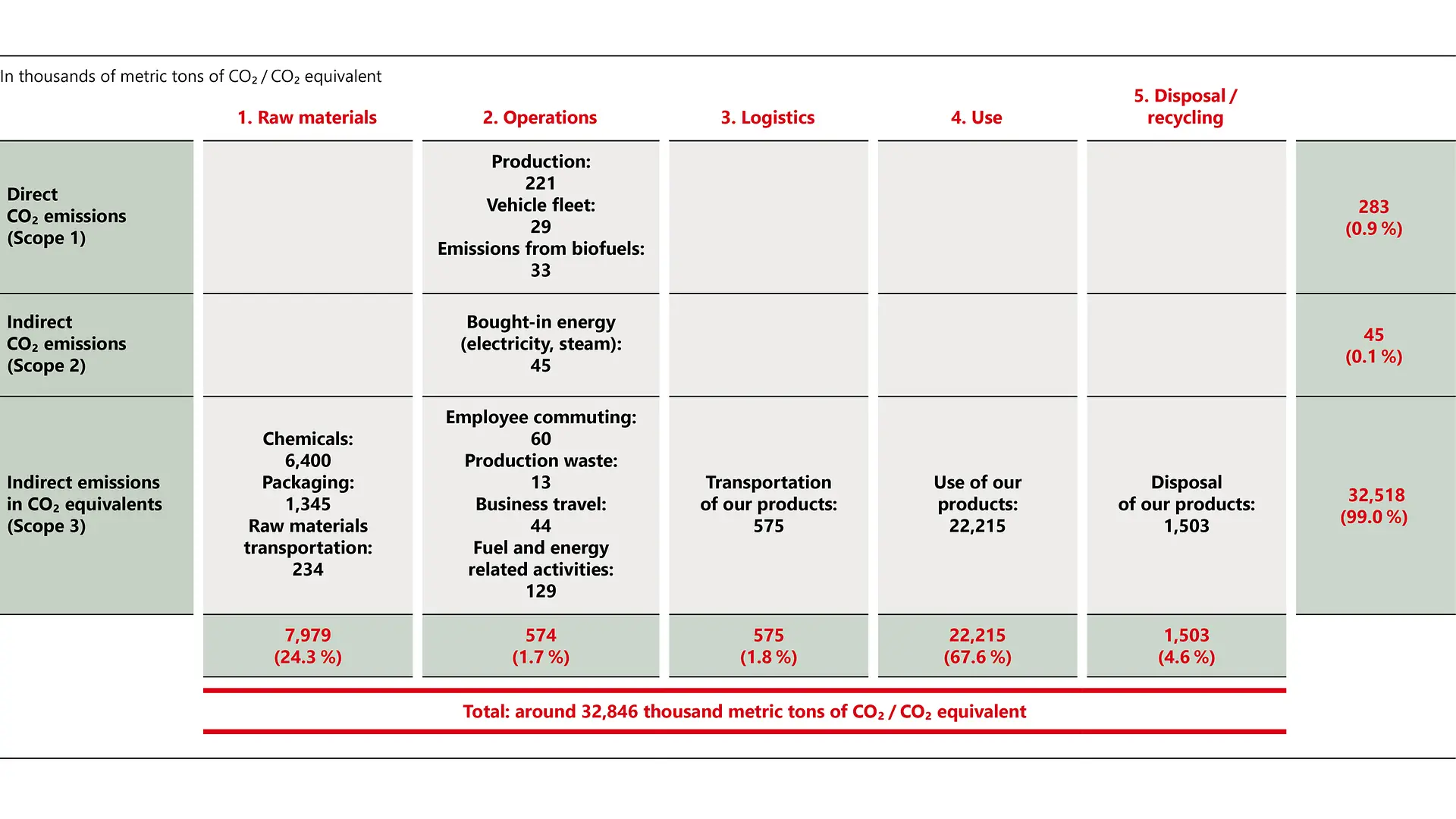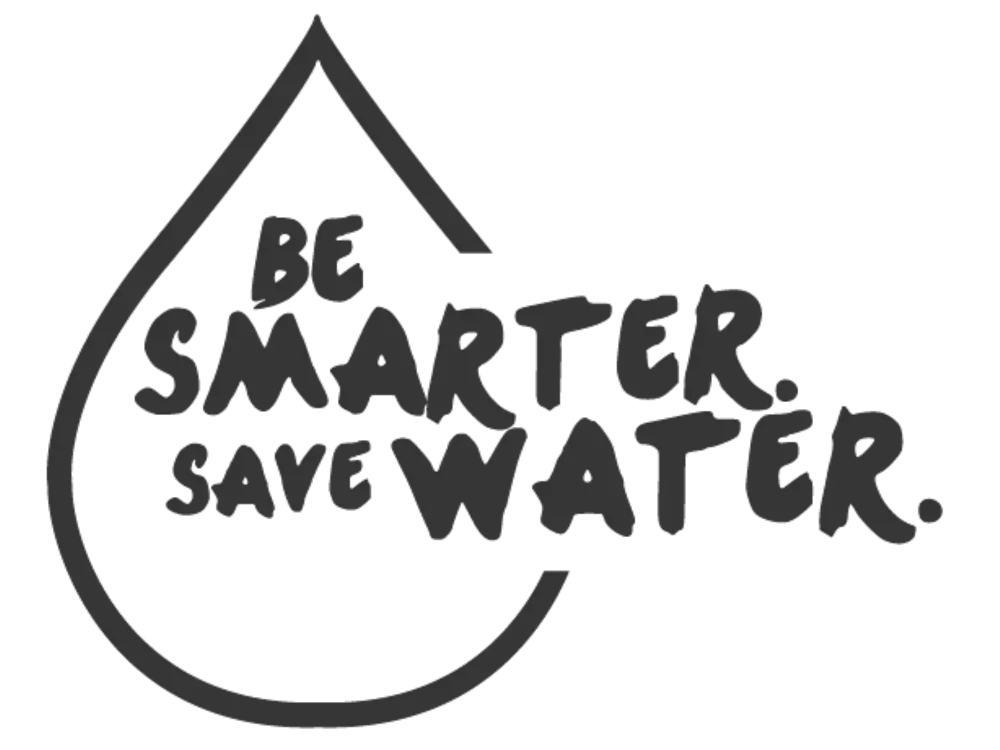CO2 emissions from raw materials
By building on our existing SBTi targets for 2030 and following our ambition to be climate positive by 2030 for our own operations we want to explore the global SBTi net-zero standard on how to set a pathway for our scope three emissions. Emissions from raw materials and ingredients play a significant part here.
Contribution by our suppliers:
The raw materials and ingredients we purchase have a decisive impact on our carbon footprint along the value chain.We therefore expect our partners and supplier to make a contribution to the reduction of CO2 along the entire value chain. This is reflected in our ambitious target to reduce the carbon footprint of our raw materials and packaging that we use by 30 percent per ton of product by 2030 compared to the base year 2017.
Replacing CO2 in raw materials:
In order to reduce emissions further, we have studied our portfolio to see where we can replace carbon-intensive raw materials with low carbon alternatives.
Many of the raw materials and ingredients we use are “organic” chemical compounds, i.e. those based on carbon, for example the surfactants in detergents and shampoos, resins in adhesives and plastics for packaging. These release CO2 when they are biodegraded or burned. We therefore plan to gradually replace the fossil carbon in our raw materials respectively as basis for ingredients and packaging with renewable carbon as we move toward a resource-efficient, climate-neutral future. In particular, the focus is on the use of carbon from plants or parts of plants as part of the renewable biosphere. Carbon from the air and from waste materials such as plastics can also be utilized as a source in the future.
For carbon from renewable sources, it is particularly important to select and evaluate these sources responsibly, and in doing so, to consider potential competition for land (such as forests or cropland) and associated emissions calculations. Often, biomass is not processed in a segregated process, but is incorporated into established production processes that also process fossil raw materials as the basis of ingredients, in line with the principle of mass balance. As such, in 2022, we began purchasing ingredients produced by BASF under the biomass balance approach for use in most consumer products manufactured in Europe in the Consumer brands division. This requires the establishment of closed control chains from the renewable raw materials to the end product. These have been certified accordingly.
Palm (kernel) oil is a key raw material for Henkel. Its cultivation can lead to deforestation of primary or secondary rainforests of significant environmental value, including peat lands and forests that absorb high levels of carbon. Drainage of these areas, for example, causes considerable carbon emissions. Our target is therefore to purchase all palm and palm kernel oil used as a basis of ingredients in our products from sustainably-cultivated sources in line with the RSPO’s Mass Balance (RSPO = Roundtable on Sustainable Palm Oil) model by 2025. In doing so, we want to avoid the abovementioned activities that drive carbon emissions during the production of palm (kernel) oil. RSPO-certified palm oil performs better than non-certified with around 35 percent lower greenhouse gas impact.
Neutralisation of CO2: permanently remove CO2 or convert CO2 into raw materials
To maximize our efforts to reduce carbon dioxide emissions along the value chain, Henkel is also focusing on technologies that are still at the development stage – and which offer huge potential for making even better use of temporary or local energy peaks in the future. This also includes exploring technologies to remove carbon from the atmosphere and permanently store it. Therefore counterbalancing the impact of emissions that cannot be completely avoided or abated.
One of these is “power-to-X”, which enables the CO2 to be used for positive outcomes and is expected to be ready for large-scale technical application within the next 15 years. The technology is the subject of a government research project that is supported by several companies: Henkel is also planning to participate.
Using power from renewable energy sources, this technology makes it possible to blend CO2 with other chemical elements and convert the energy it contains.
The “power” in power-to-X is green power that is generated through water electrolysis and stored as hydrogen. “X” represents the numerous valuable raw materials into which this hydrogen can be converted in conjunction with carbon dioxide – e.g., gas fuels, synthetic fuels or chemical raw materials. These raw materials are climate-neutral if made from CO2 taken from industrial processes. They are climate-positive if CO2 from the atmosphere is used as the resource.
This opens up new possibilities for Henkel: Firstly, we can use gas from power-to-X to fuel our production (spray towers, power plant). Secondly, we can replace carbon-intensive raw materials with raw materials from the power-to-X process.
If used on a wide scale, the technology can help to significantly cut CO2 emissions in the atmosphere, reducing the carbon footprint of our value chain in the future. Over the long term, it could even make it possible to extract more CO2 from the atmosphere than is emitted into it, making a positive overall impact on the climate.






















